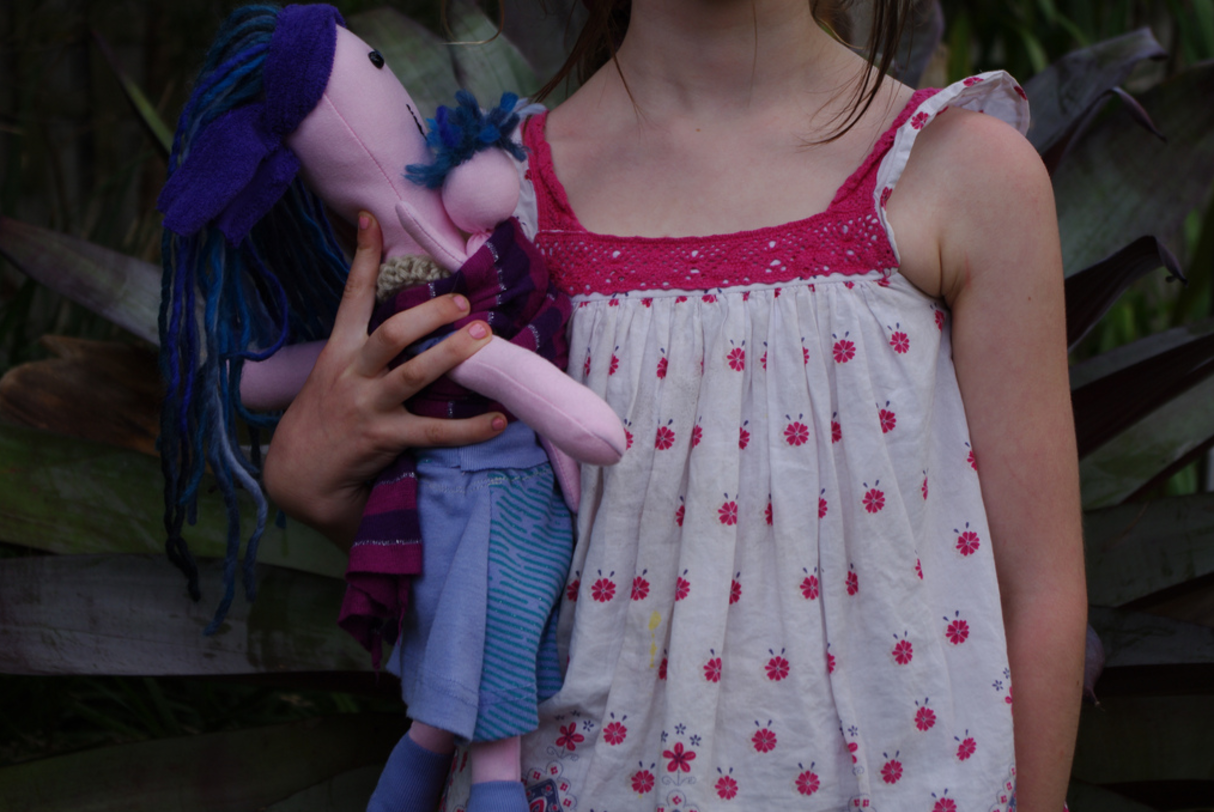
8 Things Attachment Parenting is NOT

Originally published at Mothering.com
Attachment Parenting has proven benefits, but it’s often stereotyped as a great way to “spoil” children. It’s important to know what Attachment Parenting is, and what it isn’t.
A few years ago, when my now 9-year-old was a toddler, I was interviewed for a magazine about Attachment Parenting [AP].
I described the basic principles of AP, explained how it helped me when I was a single parent, and discussed the science behind Attachment Theory.
I thought I had effectively represented what AP is to me, how it can help parents feel more capable, more patient, and more at peace with their parenting.
Related: You’re Not a “Single Mom” Unless You’re a Single Mom
The article, however, ended with a counter-point from someone who didn’t seem to be familiar with Attachment Parenting. They concluded that AP will spoil a child, because AP parents never say no, and we always give our kids everything they want.
I was frustrated reading the conclusion, knowing that this is a common misconception about the attachment parenting style. The general assumption seems to be that meeting a child’s needs by, for example, not letting them cry themselves to sleep is the equivalent of giving a child everything they want. This could not be further from the truth, and is an inaccurate assessment of what Attachment Parenting truly is.
With that in mind, here is a list of what AP is NOT:
1. Attachment Parenting is not a list of strict rules. The “Bs of AP” are simple: Birth bonding, being responsive to baby’s cry, breastfeeding, babywearing, bedding close to baby, balance and boundaries, and beware of baby-trainers. This list is a helpful guideline, not an uncompromising regulation. For instance, if you weren’t able to see your baby immediately after birth, that doesn’t mean your chances of bonding are ruined. If you can’t breastfeed, that doesn’t mean you can’t AP. If you prefer strollers to babywearing, you can still espouse the other principles of AP. The principles are there to help us as parents, not confine and limit us.
2. Attachment Parenting is not giving your child whatever they want. Attachment Parenting gets stereotypes as giving your kid whatever they want, rather than meeting their biological needs. I was a single, low-income mother at the time of the interview, and I most certainly could not afford to give my child whatever he wanted. Even if I could afford it, I appreciate a minimalist approach to life, and have no desire to give my kids everything they want. An example of meeting needs versus giving in to wants is the classic scenario of a child having a tantrum over not getting a toy at the store. There are a few options for parents to handle this. One would be to shame the child’s feelings, threatening to punish them if they don’t stop crying. Another would be to buy the toy for the child so that they stop crying. And the AP way would be to recognize the child’s feelings (“I see you are sad you cannot get the toy”), maintain a firm boundary (“We cannot get the toy”), and empathize, (“I’m sorry you are sad”).
3. Attachment Parenting is not permissive parenting. AP consists of meeting a child’s biological needs for responsive parenting. When a baby cries, it is understood that this is a baby’s language. This is their form of communication, and secure attachment is formed through responding to this communication, rather than buying into the outdated notion that crying is good for a baby. As baby grows, AP is generally associated with gentle discipline, and gentle discipline is commonly mistaken for no discipline. This is erroneous. Gentle discipline consists of firm boundaries, enforced with compassion. Gentle discipline includes understanding child development, i.e. knowing that toddlers have tantrums because they’re having a hard time, not because they’re giving you a hard time, and responding with compassion. Gentle discipline is active parenting and takes the kind of self-control and emotional intelligence we hope to see in our children.
4. Attachment Parenting is not a fad. Breastfeeding, babywearing, cosleeping– these are not trends; these are historical tenets of childrearing throughout the world. Bottles, strollers, and cribs are all new trends. Social media has helped spread the evidence-based knowledge of AP, thereby creating a new influx of AP parents, but its philosophies are not new.
5. Attachment Parenting is not a marriage-killer. Another popular misunderstanding of AP is that it must destroy relationships, because cosleeping ruins sex, full-term breastfeeding ruins intimacy, and baby’s attachment to mom must be stifling. While every relationship is different, and I cannot speak for others, I can say for my family that this assumption is false. I have written previously about cosleeping and how it does not affect my sex life. In fact, I would say cosleeping improves our time as a couple, since there are no bedtime battles, our kids fall asleep peacefully, and that leaves us with more time together in the evening. While my baby does need my attention frequently, this is true of all babies, not just AP’d babies. Attachment to a primary caregiver is a survival mechanism. The difference is in responding consistently to their needs. Strong attachment builds trust and independence, meaning our confident kiddos are fine playing independently while my husband and I have time to reconnect. Our peaceful interaction with our children leads to pleasant family time that increases the bond of our marriage. For anyone who is struggling with the impact of parenting on their relationship, great advice can be found here.
6. Attachment Parenting is not just for mom. While mom is the one who will be breastfeeding and birthing her baby, cosleeping, babywearing, responding to baby’s cries, and encouraging AP rather than baby-training can easily be embraced by an AP partner. A partner can support breastfeeding and birth bonding too. Attachment Parenting does not mean baby will be permanently attached to mom. AP is not the martyring of motherhood. AP’d babies and children can be left with babysitters once they are old enough, possibly even more comfortably than conventionally parented children, as AP is known for fostering independence. Grandparents, friends, and other caregivers can practice AP while caring for your child as well.
7. Attachment Parenting is not more challenging. In fact, I’d say it’s easier. I was a new single mom for about a week before I tried babywearing. That first week without babywearing, I attempted to do dishes and laundry while my baby screamed on the floor, and I was near tears in utter hopelessness. Then I tried the sling my doula lent me. It was a miracle. I was able to do my laundry, dishes, and other housework while my baby slept or nursed contently. Cosleeping has helped me avoid any nighttime drama and nurse my babies peacefully to sleep. Being responsive to my children’s cries has made me feel in tune with them, as though I can read their body language and needs. I could go on for an eternity praising the gentle discipline facets of Attachment Parenting, and how it has created secure, cooperative, loving relationships in my family. In short, AP makes me feel like a capable, competent mother, with the right tools to face the many challenges parenting throws at us.
8. Attachment Parenting is not an exclusive club. AP is not judging you. AP is not an elitist group of moms who do everything right. AP parents make mistakes and have bad days, just like every parent. For me, the AP guidelines helped me feel like I knew what I was doing as a new mom. Attachment Parenting does not set out to separate “good moms” from “bad moms,” or make certain choices seem like the only options. AP is a gift with many options to choose from, with its roots in science and tenderness towards children.
Do you practice some or all elements of Attachment Parenting? What is AP to you, and what is it not? What myths about AP have you encountered?
Image credit: Nico Nelson

Comments are closed.